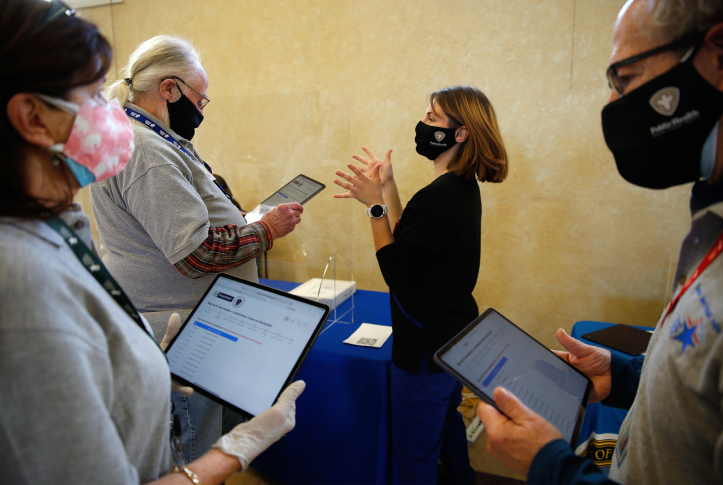States use section 1115 demonstrations (also known as “waivers”) to test innovations in their Medicaid programs. The U.S. Department of Health and Human Services (HHS) has discretion to approve these demonstration, and, as seen from the history of work-requirement waivers, each administration develops its own waiver policies and priorities. In recent waiver approvals for Arizona, Arkansas, Massachusetts, and Oregon, CMS established a new framework outlining how it will exercise discretion in three important areas:
- addressing social drivers of health, which CMS refers to as health-related social needs (HRSN)
- allowing federal Medicaid matching funds for health-related programs that were formerly exclusively state-funded, and
- achieving budget neutrality.
CMS intends to apply this new framework to other states seeking similar waiver flexibilities and funding.
Addressing Health-Related Social Needs
CMS approved Medicaid funding for HRSN in all four states, building on previous waiver approvals.1 While CMS articulated strong support for HRSN investments, it also prioritized basic program operations by limiting how much Medicaid funding a state can devote to HRSNs and establishing requirements relating to payment levels in the state’s Medicaid program:
- CMS will not approve HRSN expenditures that exceed 3 percent of a state’s total Medicaid spending. Waivers will include a cap on HRSN spending based on a state’s projected expenditures; spending above the cap will not qualify for federal matching funds.2
- As a condition of approving HRSN investments, CMS is requiring states to meet provider payment rate standards to strengthen access to care in Medicaid. States with rates for primary care, behavioral health, and obstetrics services that are less than 80 percent of Medicare rates must narrow that gap by at least 2 percentage points by the beginning of the third year of their demonstration.
- Medicaid-financed HRSN investments must result in new services and cannot supplant an existing program or funding.
Funding Designated State Health Programs
Historically, CMS approved waivers allowing states to draw down federal Medicaid matching funds for certain types of state-funded programs (which CMS refers to as “designated state health programs” or DSHPs) and use the state funds freed up to finance new waiver initiatives.3 However, in 2017, CMS announced it would no longer permit DSHPs. With the Arizona and Oregon approvals, CMS reversed this policy. Oregon, for example, will receive federal funding for certain state-funded, health-related programs focused on low-income populations and use state funds freed up by that federal investment to finance a portion of its HRSN initiative and coverage expansion for youth with special health care needs.
CMS attached conditions to DSHP funding, some of which overlap with those placed on HRSN approvals:
- federal funding for DSHPs cannot exceed 1.5 percent of the state’s total Medicaid spending
- waiver initiatives cannot be exclusively financed with funds freed up from DSHPs; states must use other sources to fund at least 15 percent of the state’s share of costs
- initiatives financed with funds freed up through DHSPs must be new; they cannot supplant or supplement existing services or programs
- the same provider payment rate requirements outlined above for HRSN approvals apply to DSHP approvals.4
Achieving Budget Neutrality
Under longstanding federal policy, 1115 waivers cannot result in new federal costs, meaning federal waiver spending cannot exceed projections of the amount the federal government would have spent on Medicaid in that state without the waiver. If federal spending exceeds the “without waiver” projections, the state must repay the federal government. If spending is below projections, the state can use the difference (“savings”) to meet budget-neutrality requirements in future waivers. This paradigm has shortcomings. It puts states at risk for unanticipated Medicaid program costs unrelated to the waiver initiative (e.g., new high-cost drug treatments) and generally favors waivers that aim to reduce spending rather than invest in new coverage or services. Additionally, while savings from prior waivers can provide a cushion for states, they are not necessarily “real savings” and are not available to states without previous waivers. These concerns led CMS in 2018 to limit states from carrying over savings beyond those that accumulated during the prior five-year demonstration period. This change, however, created other problems, including leaving some states unable to sustain promising waiver investments at renewal.
The new budget neutrality framework makes substantial revisions to these policies, most notably:
- CMS will rely on national — and often more generous — trend rates when projecting “without waiver” spending and allow states to adjust projections during the demonstration to account for new costs that would have occurred without the waiver.
- CMS expanded, but did not eliminate, the limit on savings that can be carried over to new demonstration periods.5
- CMS clarified its policy to allow states on a more consistent basis to make certain investments, including HRSN initiatives.6 This levels the playing field for states without accrued waiver savings.
Moving Ahead
CMS’ new waiver policies enable states to pursue new investments, including those addressing health disparities and focused on underserved populations. They also impose guardrails to prevent these new investments from crowding out basic Medicaid coverage, while attaching conditions aimed at strengthening access to care.





